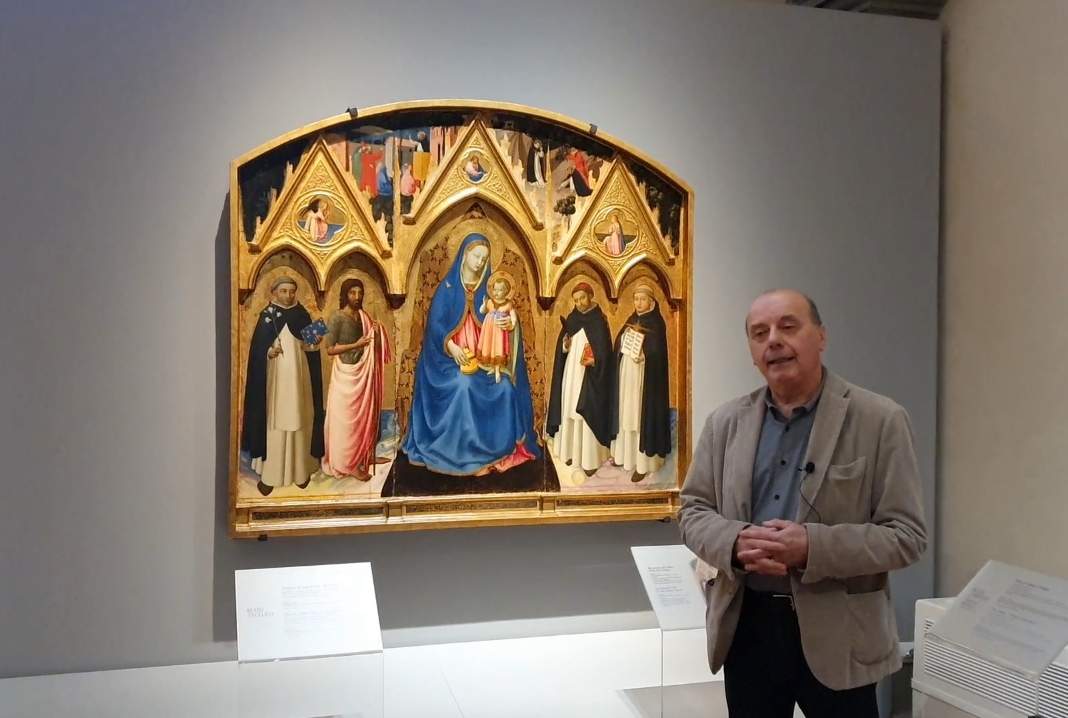The director of the San Marco National Museum in Florence, art historian Angelo Tartuferi, is speaking out against the use of artificial intelligence in museums. The occasion for the reflection comes from an interview that Alessandro Santini, on the museum’s blog, created using the famous ChatGPT program, to which he asked several questions just about the San Marco Museum, getting answers about the history of the museum, the works, even advice for the public.
However, Tartuferi does not share his colleague’s enthusiasm. While declaring himself open to innovations in technology (according to the director, a good app, such as the one that the institute itself offers visitors at the entrance, with texts prepared by the technical-scientific staff, is still preferable to answers from an artificial intelligence, while for the visitor with more knowledge even better would be a guide written by insiders), Tartuferi does not believe that programs such as ChatGPT can help inside museums.
Meanwhile, he questions the usefulness of a possible multimedia station to which questions could be addressed. “A totem placed at strategic points in the museum, ready to tell visitors where the exit is, where the restroom or the bookshop is ... or to give a flood of briefings on each work? As I write this, I’m already trembling at the idea that I’ll happen to see it for real!” says Tartuferi. “Can you imagine such a column or technology station leaning against the wall near the entrance to the so-called Savonarola Apartment in our museum? Or perhaps just crossing the threshold of the Sala di Giove in the Pitti Palace? It will be said that I am artfully exaggerating, and yet, given the fact that within the framework of the current trend, one of the most important goals stated in our days for visiting a museum is that the visitor brings back an experience that is as inclusive, immersive, amazing, and immersive as possible (I think I am not forgetting anything, or maybe I am!?), these innovations seem to best pander to that noble goal.”
The director then disputes the fact that the artificial intelligence does not indulge in personal opinions or preferences. This aspect, although it lays claim to the “intellectual honesty” of the device, at the same time runs the risk of drying it up or, worse, rendering it useless if the artificial intelligence “declares that it is not in the least interested in fostering and/or developing in the younger generation the critical spirit, the motions of the soul, personal preferences. In short, it cannot give any help to the achievement in the educational field of one of the most important missions, indeed the most important mission. Because to all of us, young and old, bombarded as we are by all kinds of messages, what is left as an act of affirmation of one’s individuality -- indeed, before that, of one’s dignity -- if not the systematic exercise of opinion, judgment and personal preference on every aspect of life: from politics, to culture, to the brand of a toothpaste!” What then in essence is the use in museums of this tool? Tartuferi ironically closes, “if someone legitimately disagrees or can’t take it anymore due to fatigue-because undoubtedly getting one’s brain to work requires effort-he now knows that he can get help from ChatGPT or the like.”
Pictured: Angelo Tartuferi
 |
| St. Mark's Museum director speaks out against artificial intelligence in museums |
Warning: the translation into English of the original Italian article was created using automatic tools. We undertake to review all articles, but we do not guarantee the total absence of inaccuracies in the translation due to the program. You can find the original by clicking on the ITA button. If you find any mistake,please contact us.